
|
The Astrology Center of America, 207 Victory Lane, Bel Air, MD 21014 Tel: 410-638-7761; Toll-free (orders only): 800-475-2272 |
|||||||
|---|---|---|---|---|---|---|---|
| Home | Author Index | Title Index | Subject Index | Vedic Books | Tarot | E-Mail: | |
 |
Medical Astrology Bookspublished by Astrology Classics /
|
March, 2013: I have lately been suffering the wonders of modern medicine, which, my life in danger as a result, has made me redouble my efforts to re-establish Medical Astrology, which is vastly superior. As Cornell emphatically says, you may diagnose, with confidence, using the natal chart alone. Modern medicine uses mere symptoms, many of which are commonly misleading, and known to be so. Introduction: How to use religion to reintroduce herbal medicine to America:
If this is your first time in this strange area, know that, up to the legal imposition of modern medicine in 1910, herbalists commonly cured most forms of cancer (among many other "incurable" ailments), using a variety of means. From 1600 onwards, they published many books with detailed recipes and formulas. But in the late 19th century, the enthusiastic adoption of science by certain university medical schools took medicine in another direction. These scientific medical researchers threw out existing medical texts, in favor of sheer experimentation. It was believed at the time that, as the body was merely a machine, one that science well-understood, science would rapidly solve all medical problems, so why bother with the past and its archaic and weird and presumably guess-work formulas? (See Blagrave, below, for a list of old techniques and surprising cures.)
Regrettably, when these early scientific doctors did not have great success, when the public rejected them in favor of herbalists who could actually cure, the Carnegie Foundation and the AMA issued the Flexner Report which successfully banned all other forms of medicine. It would have worked, but the science they used - the science that is still being used - was not strong enough for the job. If it was, we would not have such soaring medical bills for such awful results. When you're being bankrupted by medicine, especially one that so often does not heal, don't put up with it and don't be a sucker. Find a different medicine!
Lacking other alternatives, why not go back to the past? For cancer, a freshly roasted (in a clay pot) and ground lobster, combined with an equal amount of finely diced garlic, tightly bound as a poultice over the cancer and left for 24 hours (keep the patient awake, the fumes are noxious), the poultice then carefully removed and buried, followed by another poultice of elder leaves steeped in buttermilk (another 24 hours) are said to cure many cancers, this recipe from Brother Aloysius, 1912 (note there are details I have not included). Has anyone tried this on, say, skin cancer? Note this is a two-step process, which is already more sophisticated than most modern efforts with cancer, which remind me of children dumping powders and liquids on anthills, to see if any single substance will kill them. Radiation? No. Chemotherapy? No. Surgery? No. What other ideas you got? Any?
As all realistic alternative medical practices are strictly prohibited in the US and likely to remain so, the route to success will be via religion. Any priest, pastor or preacher, preferably of a large urban church, who wishes to bring real medicine to his congregation may do so by adopting the Christian Science principle of religious freedom of medical practice and giving the herbalists (who are most likely already members of his church) religious protection to practice what they already do, presently in secret. I caution that such herbalists can, and have in the past, been mistaken as witches. This would be a foolish mistake to make, dangerous even to tolerate as a thought.
Also in a large congregation, there will be lawyers and attorneys who can craft the necessary legal release forms, as well as fight efforts by the medical establishment to shut down the church's medical program. Fierce efforts to suppress free medical expression will be made.
A large urban church would also, I presume, have among its members local politicians who can advocate for changed laws. Currently, medicine is regulated by the states, not Washington. Know that religion is stronger than law, stronger than science. It always has been. If you are a pastor reading these words, know that you are stronger than you dare think.
A friend of mine, a pharmacist in Southern California, has for many years run a small shop where she sold herbal teas. A couple of years ago she discovered Facebook and in the process of messing around, quickly became the most famous "doctor" in all of southern California. Last I checked (March 10, 2013), her Facebook page had more than 29,000 likes and at any given moment, around 15,000 people talking about her. The people who "like" her currently increase by over 1000 a month. This woman was once my neighbor, I know her personally. The majority of her "Facebook likes" are in a 3-county area, which is to say they're locals. That's the kind of pent-up demand for real medicine that's already out there. The need for better medicine is overwhelming the poor woman.
A brave pastor who flaunts the law will, in fact, touch off a firestorm and in the process, become nationally famous overnight. My proposal is not small.
I regret that, so far as I can tell, astrology will not be a part of this for some time, until many laws are changed. While I can encourage a group of astrologers to organize themselves as a religion and train astrologer-priest-healers and thus run the same religious-based medical program as any pastor in a church, astrologers are in fact too contentious and lazy to do so. But there is nothing to stop them from training themselves.
In addition to Aloysius (A Healer's Herbal, also known as Comfort to the Sick), which I would like to see reprinted, one will also find much in the Smith's Family Physician, of 1869, which is in reprint. The usual on-line booksellers have them, in addition to all the books listed below. The Los Angeles Public Library has many texts on herbalism.
Below are the books I have published to date, either on medical astrology itself, or, such as Broughton and Lilly, that significantly touch on it. There will be more.
As Blagrave and Broughton strongly suggest, medical astrology can be combined with herbalism to form a comprehensive, cheap, reliable and largely safe form of medicine.
David R. Roell
Here is a brief sample of what was nearly lost:
Rules for Operations, as given in the Encyclopaedia of Medical Astrology, by H.L. Cornell, M.D.
 Indicates a book on our Top Ten list. If you would like to find more books like it, click on the star.
Indicates a book on our Top Ten list. If you would like to find more books like it, click on the star.
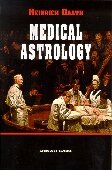
|
||
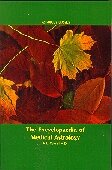
|
 THE ENCYCLOPAEDIA OF MEDICAL ASTROLOGY - H.L. Cornell, THE ENCYCLOPAEDIA OF MEDICAL ASTROLOGY - H.L. Cornell, Contents: Comment: From page 502, on Medical Astrology: In my years as a physician, I have, by the use of Astrology, been able to very quickly locate the seat of the disease, the cause of the trouble, the time when the patient began to feel uncomfortable, as based on the birth data of the patient, and this without even touching or examining the patient, and my intense desire to get this knowledge and wisdom before students and Healers in a classified form, is the reason for this Encyclopaedia.... When once you have discovered the cause of the disease, and understand its philosophy and the relation of the patient to the great Scheme of Nature, the matter of treatment I leave to you, and according to the System and Methods you may be using. This is by far the best book ever written about medical astrology. Though it dates from 1933, it is, in fact, the best medieval astrological medical reference ever put in print. It's not that Cornell set out to write a medieval treatise, but that the works he used in his daily practice, which he exhaustively cross-indexed to create this book, were themselves ultimately basd on the best medieval knowledge. Which was sifted through Cornell's practice in the early days of the 20th century. In this book you will not find techniques of treatment, since, as Cornell says, once you know what's wrong, there are many different ways that will successfully treat. This book excels in diagnosis, in other words, if the symptom is X, then the astrological cause is Y. Which becomes the key to reading the patient's chart, or the decumbiture. This diagnosis is not given in current medical jargon (which is nearly incomprehensible, even to those who are trained, and which changes from decade to decade), but in traditional language. The same language, in fact, as you will find in Culpeper, Saunders, Lilly, Blagrave & many others. This book is the key that will open all of these & many more. I learned this by accident while preparing a glossary for Blagrave. Of all the sources I consulted, of all the people I asked, Cornell was head & shoulders above the rest. Click here for a pdf extract. November 2010: Now in paperback at a much lower price. I am pleased with the new paperback edition. It is sturdier than I expected. - Dave Astrology Classics, 958 pages, paperback. |
||

|
||
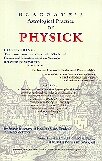
|
||
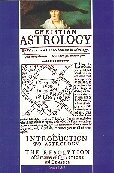 |
||
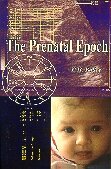
|
||
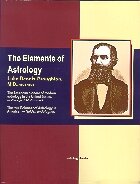
|
||
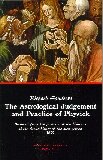 |
||
 |
||

207 Victory Lane, Bel Air, MD 21014
Tel: 410-638-7761; Toll-free (orders only): 800-475-2272
| Home | Author Index | Title Index | Subject Index | Vedic Books | Tarot | E-Mail: |
Established 1993, The Astrology Center of America is owned & operated by David Roell.
This entire site (AstroAmerica.com) is copyright 1996, 1997, 1998, 1999, 2000 by William R. Roell.
All rights reserved.